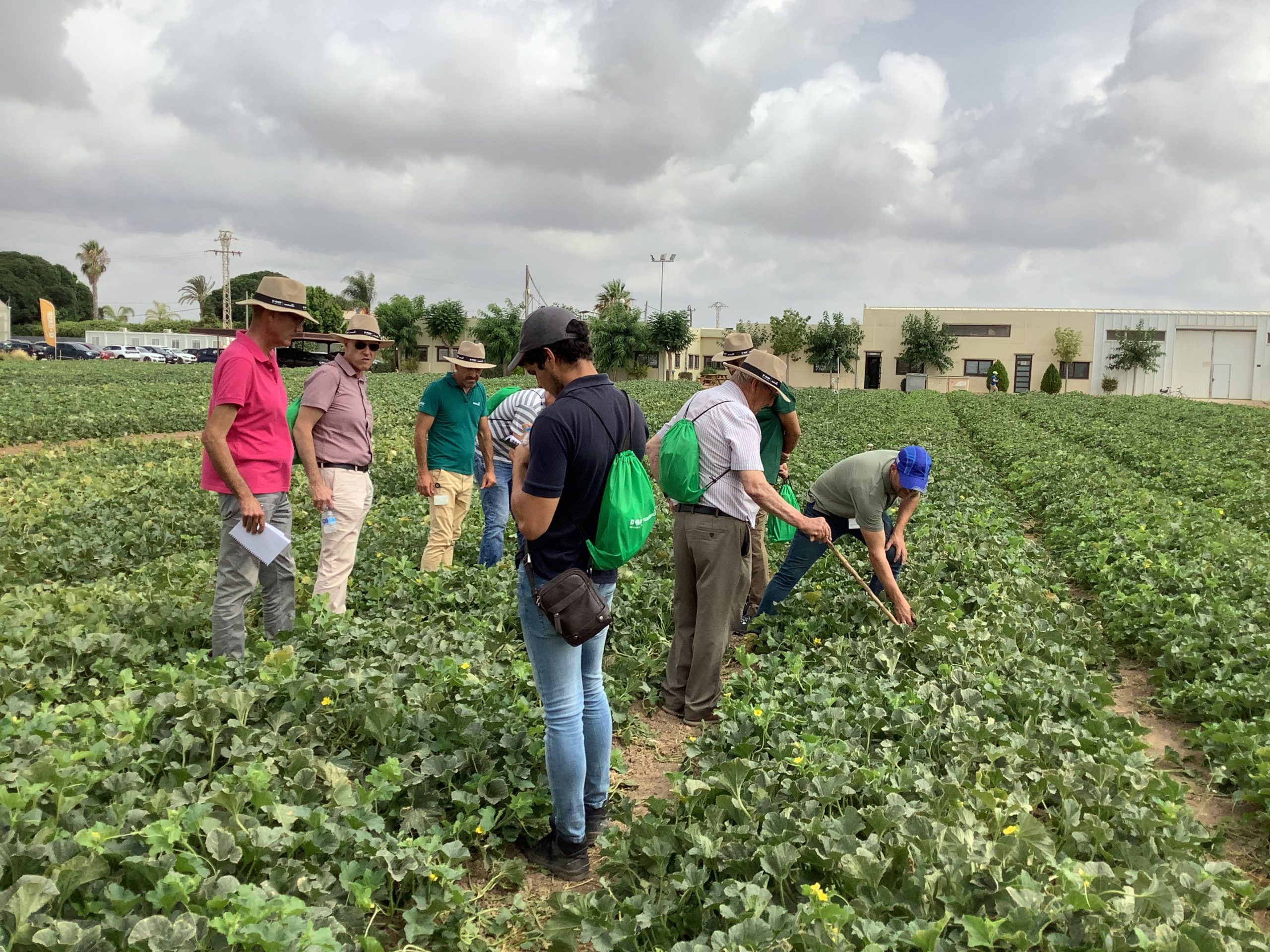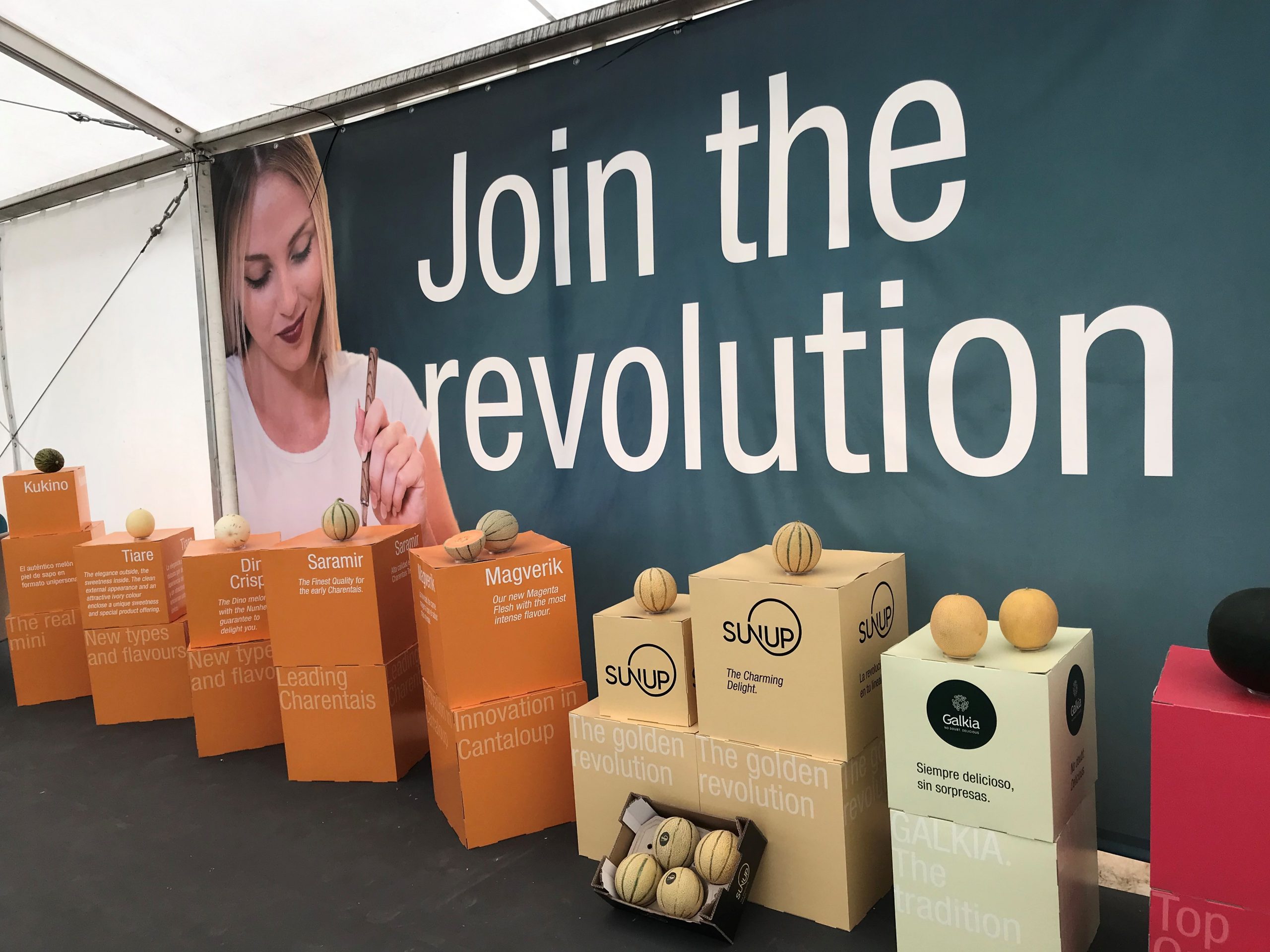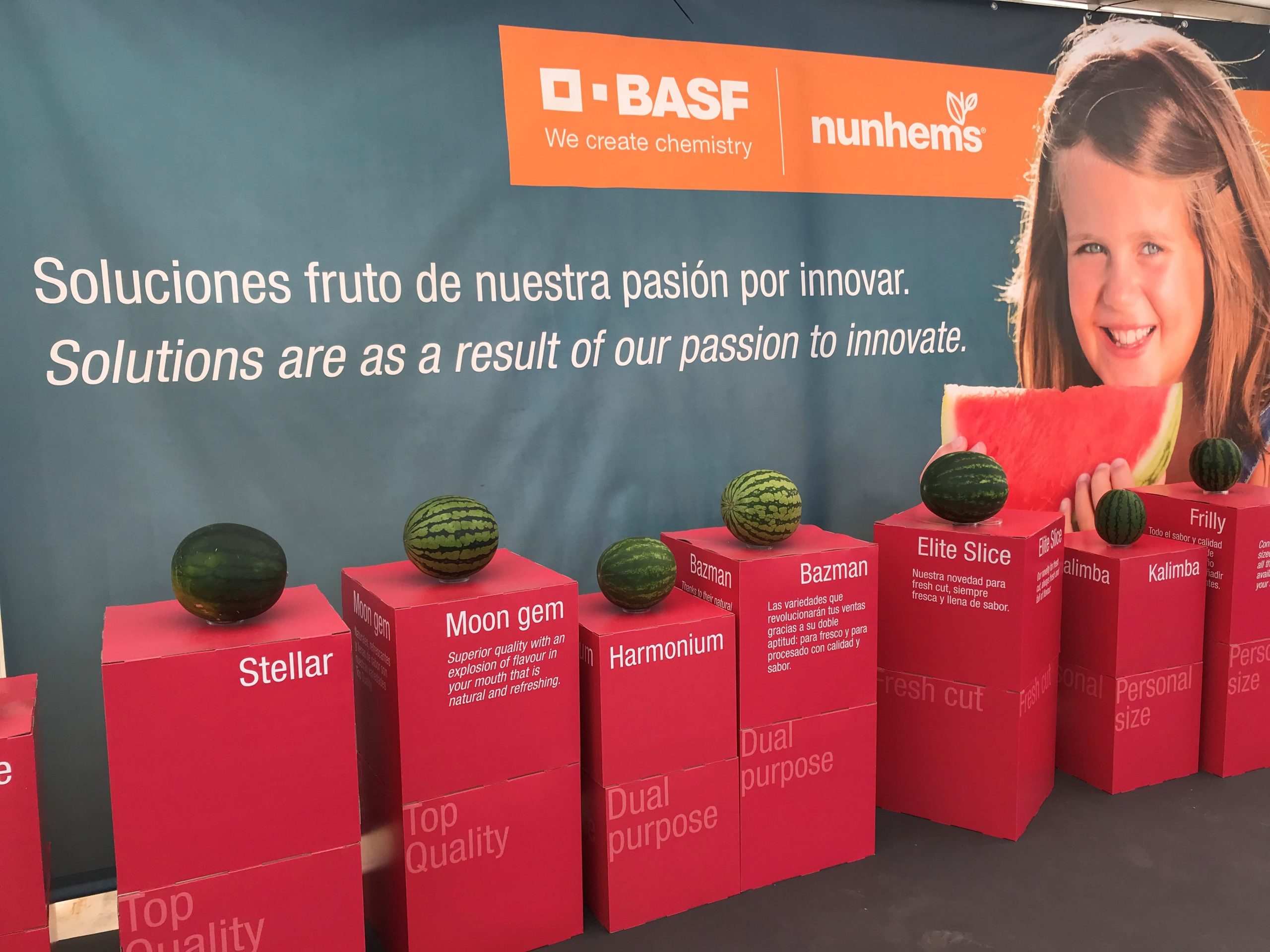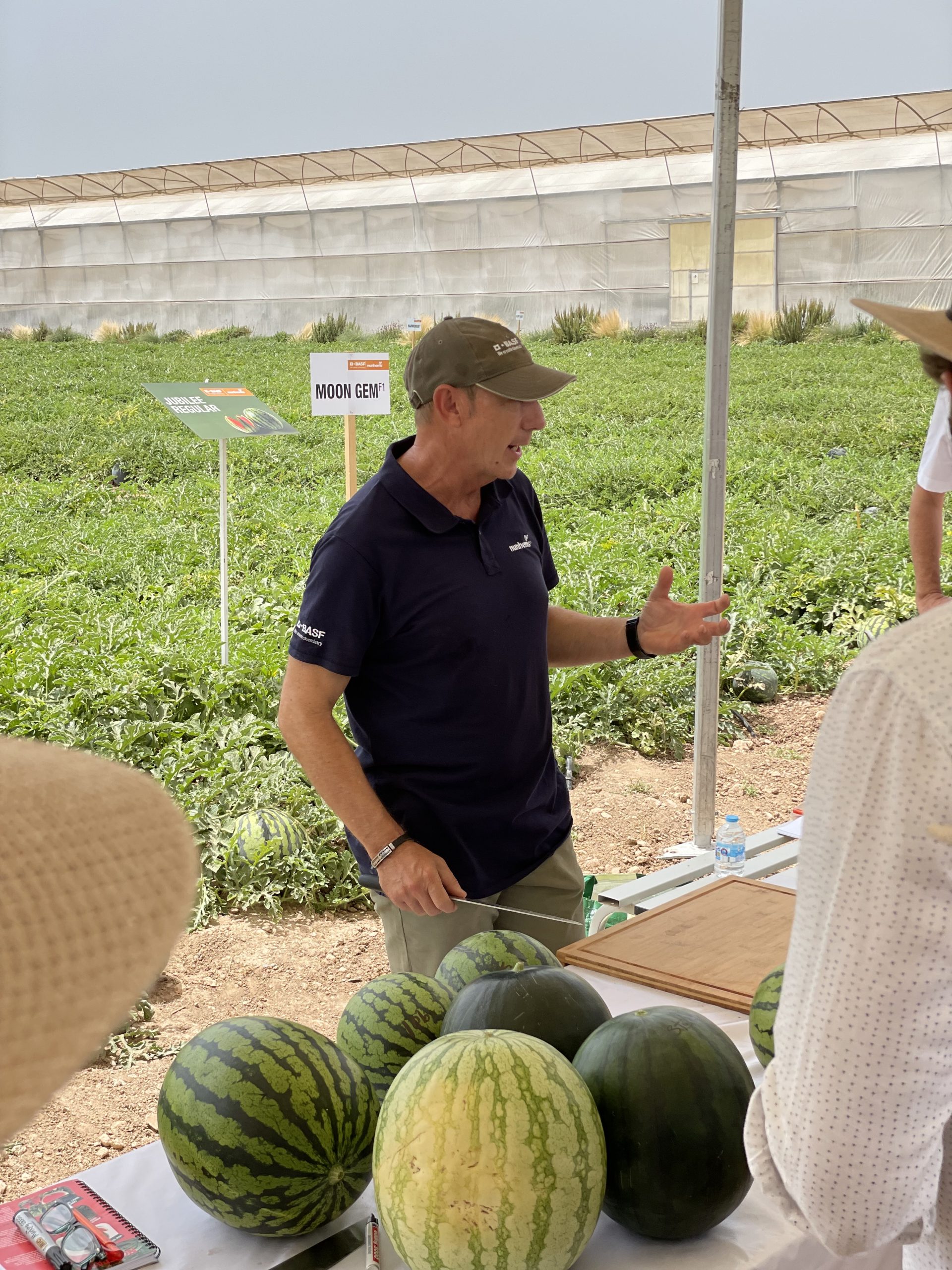BASF ‘revitalises’ watermelons and melons with a ‘deluge’ of innovative concepts and solutions
- In watermelons, they completed their range of pollinators and presented new ideas in the midi and fresh cut segment, maintaining the strong flavour of their fresh consumption varieties.
- In melons, BASF updated its Magenta line with varieties with ripeness indicator, it filled in the whole cycle with its Charentais and Piel de Sapo melons for La Mancha, and it ‘revolutionised’ the market with new types and flavours.
Who said eating melons and watermelons was boring? And even though the market for these fruits is a mature one, it’s ripe with new opportunities. To shed some light on all -or at least a lot- of its varieties, BASF opened the doors to its Finca Lo Ruiz research centre (La Palma, Murcia), for the latest Melon & Watermelon Business Event for Experts (BEFE), which took place between the 4th and 8th of July.
Under the watchful gaze of producers, retailers and distributors from the world’s main production areas, its seeds business, which operates under the Nunhems brand, once again demonstrated its leadership in watermelons and gave another turn of the screw in melon, thanks to its introduction of new concepts and innovative solutions.
“Here at BASF, we have contributed to the professionalization and technification of watermelon farming to generate value for producers and to offer consumers high quality varieties,” explained Pere Montón, Senior Account Manager for Watermelons, adding: “We want to continue to be pioneers in the introduction of new concepts and solutions,” as they did with Fashion F1, Premium F1, Style F1, Bazman F1 and Harmonium F1, the standard-bearers of the dual-purpose concept.
And all of this is to “help our clients develop new, successful and profitable watermelon projects.”
True to this mission statement, this year BASF presented new proposals in the microseed, midi calibre and fresh cut sectors. In the first of these sectors, the new Kalimba F1* completed a microseed range which already features varieties such as Kalanda F1 and Premium F1, the market leader. With Kalimba F1*.
“We are filling the whole season with a line of watermelons that have a good pollination capacity, a high internal quality and the same-coloured skin.”
Three new varieties were introduced in the midi calibre: MJS MIDI 901 F1°, CSS MIDI 812 F1° and Bolita F1*, with crunchier flesh, a better post-harvest behaviour and “a surprising internal quality.”
Lastly, in the fresh cut sector, BASF presented Elite Slice F1, a watermelon through which it reiterated its commitment to consumers of minimal processing products, offering them the same flavour as fresh product consumers.
Completing the melon range
BASF presented new solutions and concepts in several segments, following three clear lines of work: innovation, fresh cut and, lastly, new types and flavours.
In innovation, without losing sight of its leadership in its magenta-fleshed Cantaloupe melons, BASF continued to complete its Magenta range with varieties such as Magverik F1, which is for greenhouses in Almeria and a mid-cycle in Murcia in the open field, with resistances to powdery mildew and aphids.
It also took another step in its search for excellence in flavour with the launch of a new range of varieties with a clear ripeness indicator.
“Their skin changes colour and there is microcracking around the stalk when they reach their optimum ripeness,” explained Antonio Izquierdo, Regional Product Development Specialist at BASF.
There were three new varieties within this new solution: CA 119 F1° and Pearl 788 F1, with orange flesh and skin which turns cream-coloured when ripe, and CA 200 F1°, with intense magenta-coloured flesh and a resistance to powdery mildew (3.5) and aphids.
“With CA 200 F1°, we are improving our Magenta line with a new variety for the late cycle, one which looks very uniform in terms of both calibre and shape, and which also shows you when to harvest” Izquierdo went on to say.
In Charentais melons, BASF managed to complete its range by covering the entire production cycle with the introduction of Saramir F1 – a variety for the early cycle, with great flavour and aroma, resistance to powdery mildew and good performance against aphids; and NUN 14160 F1* – a late transplant variety with a smaller calibre and a good post-harvest, a quality which is hard to achieve under high temperatures.
Lastly, in Piel de Sapo melons, they introduced the PDS 320 F1°, which along with Quintero F1 and Rockero F1 – both mid cycle varieties – completed La Mancha cycle with early and late transplant varieties.
Izquierdo pointed out that: “This variety offers high uniformity in format and calibre in various production areas,” and he highlighted its “stability in different climatic conditions and good flavour.”
‘Groundbreaking’ and convenience
In terms of new types and flavours, BASF’s new variety is Mayan 510 F1*, a Dino variety with crunchy flesh and a high Brix level. This type of melon, with white flesh and cream-coloured skin with green stripes “is being developed mainly in America, although it is being introduced into Europe little by little.”
In addition to that, BASF also showed its Tiare line, a very aromatic assortment with “exceptional flavour and up to 20 degrees Brix” for the Italian market; and its Mango Melon for the Middle East.
Lastly, under the fresh cut concept, they selected a series of varieties with distinct properties which, due to their firm flesh and post-harvest life, are adapted to minimum processing. They included Magestium F1 (Magenta line) and CA 119 F1°, an orange fleshed Charentais; its new Dino type and a Golden, both with white flesh; and also, Rockero F1. All of them have “good flavour and firmness which allows them to be used in retail as fresh or processed.”
BASF once again showed its commitment to innovation by offering new solutions which contribute to the revitalisation of the melon and watermelon market, adapting to new trends. And if they have got one thing clear, it’s that: “Healthy eating should be attractive and sustainable.”
About BASF’s Agricultural Solutions division
Farming is fundamental to provide enough healthy and affordable food for a rapidly growing population while reducing environmental impacts. Working with partners and agricultural experts and by integrating sustainability criteria into all business decisions, we help farmers to create a positive impact on sustainable agriculture. That’s why we invest in a strong R&D pipeline, connecting innovative thinking with practical action in the field. Our portfolio comprises seeds and specifically selected plant traits, chemical and biological crop protection, solutions for soil management, plant health, pest control and digital farming. With expert teams in the lab, field, office and in production, we strive to find the right balance for success – for farmers, agriculture and future generations. In 2021, our division generated sales of €8.2 billion. For more information, please visit www.agriculture.basf.com or any of our social media channels.
About BASF
At BASF, we create chemistry for a sustainable future. We combine economic success with environmental protection and social responsibility. Around 111,000 employees in the BASF Group contribute to the success of our customers in nearly all sectors and almost every country in the world. Our portfolio comprises six segments: Chemicals, Materials, Industrial Solutions, Surface Technologies, Nutrition & Care and Agricultural Solutions. BASF generated sales of €78.6 billion in 2021. BASF shares are traded on the stock exchange in Frankfurt (BAS) and as American Depositary Receipts (BASFY) in the U.S. Further information at www.basf.com/global/en.html







